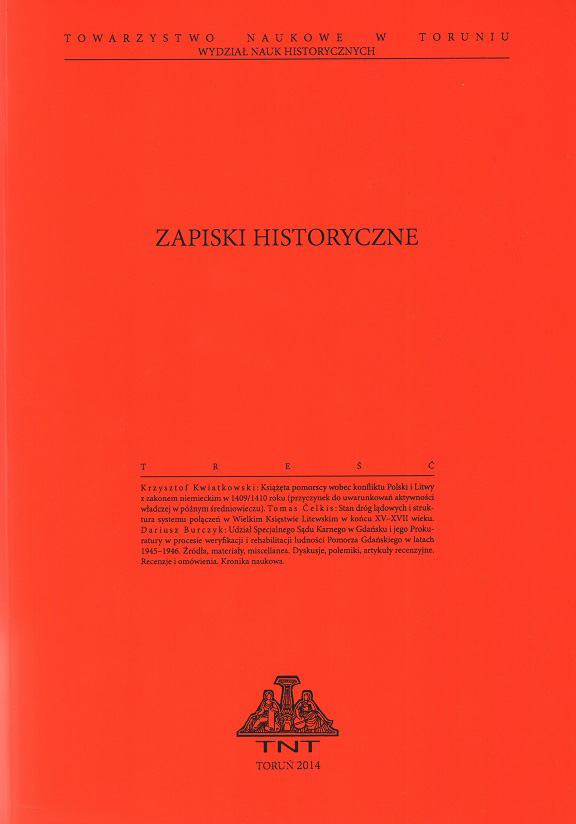
We kindly inform you that, as long as the subject affiliation of our 300.000+ articles is in progress, you might get unsufficient or no results on your third level or second level search. In this case, please broaden your search criteria.


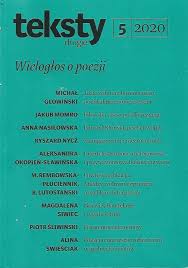
Tabaszewska examines the unique type of narrative found in the work of novelist Magdalena Tulli (b. 1955). Beginning with a discussion of Tulli’s prose as representing the so-called non-epic prose model, Tabaszewska goes on to highlight the atypical temporal structures in Tulli’s books. Drawing on research on affect (B. Spinoza, B. Massumi, J. Bennett), emotions (S. Ahmed, M. Wetherell) and memory (A. Assmann), Tabaszewska suggests that the key to understanding Tulli’s work is the non-linear temporality caused by a looping of affect and memory.
More...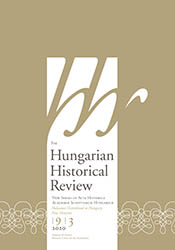
Scholarship on women’s experiences is recently surfacing to understand a broader and more nuanced picture of Holocaust history. This case study wishes to add to the currently emerging interpretations of gendered experiences through the events of miscarriages that persecuted women experienced before, during, and after the Shoah. While the topic of miscarriages is only a segment of the larger subject of pregnancy, this research aims to offer a methodological example of including corporeal experiences into the gender analysis of the examined time period. This case study thus presents its relevance in bearing the ability to alter previous scholarly understanding on the demographics of Jewish communities after 1945 by showing that women’s reproductive and fertility experiences have not been included in social scientific discussions.
More...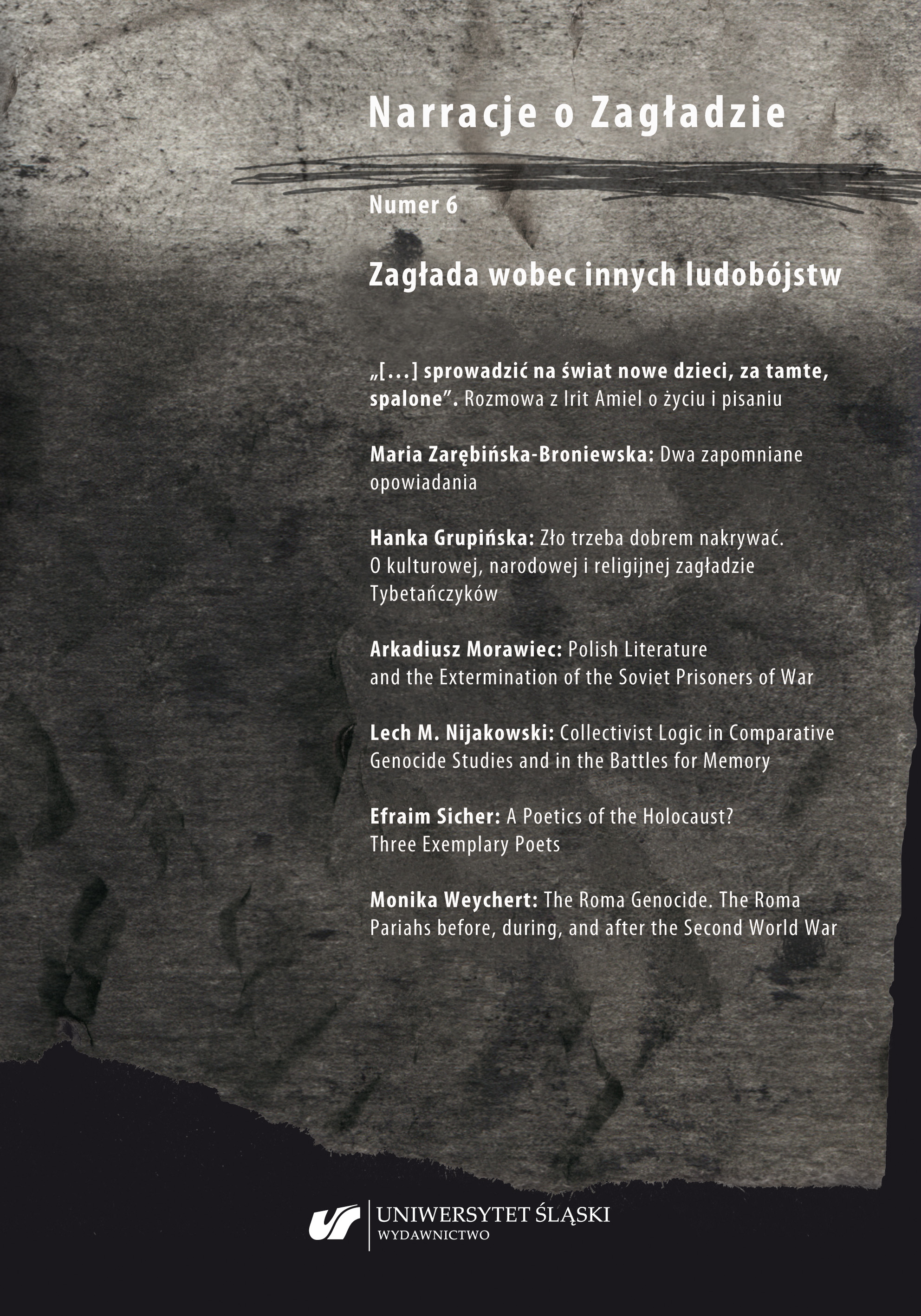
The article is dedicated to an analysis of the Holocaust uniqueness against the backdrop of other genocides. Most of all, the text follows the clues from Berel Lang, who interprets the Nazi Crime as a perfect genocide, that is, such a genocide that implemented its ideological assumptions fully for the first time in human history. What transpired then was in fact a comprehensive synthesis of “idea” and “actions.” Therefore, the relation between the Holocaust and other genocides turns out to be one-sided: the Holocaust is a genocide but no other genocide is the Holocaust. The category of genocide was, first of all, introduced into international circulation by a Polish lawyer of Jewish origin Rafał Lemkin during the final decade before the outbreak of World War Two. Genocide has become an almost universally acknowledged term, reinforced by the UN declaration of 1947. Mass crimes occurred in human history since the time immemorial. However, their character fundamentally changed with the advent of modernity, when powerful nation states within the framework of ideological postulates managed to give a new dimension to their politics, the one including actions meted out against entire communities: ethnic groups or nations. The Nazi crime of the Holocaust seems to be a unique exemplification of “modernity” (the term introduced in this sense by Zygmunt Bauman), that is, the combination of technicalisation and mass production with strong bureaucratic structure, which resulted in an unimaginable deed of murdering millions of Jews while utilising technical methods. The killing took a form of “production tasks,” which made the moral problems of responsibility and guilt appear in a different light. In the article an attempt is made to show implications stemming from the acceptance of the Holocaust’s uniqueness as “a perfect genocide,” both in its political and social as well as philosophical and moral dimensions.
More...
The article presents wartime memories of the families Krzyżanowski (after the war: Dębicki), Wajs, and Siwiak that were written down by Jerzy Ficowski in the late 1940s and early 1950s, and subsequently reprinted in consecutive versions of his monographs on Polish Romani people (Cyganie polscy. Szkice historyczno-obyczajowe and Cyganie na polskich drogach) and in his memoirs entitled Demony cudzego strachu. Wspominki cygańskie [The Demons of Other People’s Fears. The Gypsy Reminiscences]. The discussed narratives relate to experiences from Volhynia of the years 1942–1945. The article’s aim is to indicate the type and scope of alternations that Ficowski made while editing the memoirs in consecutive publications. A handwritten copy kept in archive is treated by the author of the article as the base version. The differences between the successive versions were divided into four groups: stylizations, fictionalizations, erasures and additions, ethnographical issues. What results from the conclusions of the presented analysis is the memoirs published by Ficowski no longer enjoying its status as a historical source relating to/pertaining to the wartime events in Volhynia. To the contrary, they are a testimony to the selfcensorship mechanisms implemented by Ficowski, who kept in mind the specificity of majoritydominated society members being the primary readership of his books on the Romani people.
More...
The article describes Jehovah’s Witnesses women as one of less remembered groups among victims of the Nazi regime. What is pointed out, first of all, is the state of research on their history, especially pertaining to their camp experience, Western literature on the subject and a negligible number of Polish research works devoted to the topic in question, and also some methodological dilemmas related to researching it. The author presents the circumstances of German Jehovah’s Witnesses after Hitler’s seizure of power, their subsequent persecutions, and also – reconstructed on the basis of documents, witnesses reports, and the members of persecuted group themselves – the fate of female followers of this religion (“the purple triangles”) in concentration camps. The author’s main points of focus are, described by witnesses/beholders/onlookers of the events, acts and attitudes of “the purple triangles” marked by strong spirituality, at the same time unbreakable/intransigent in their defiance of/against violence and the authorities’ orders. (Everybody knew that Jehovah’s Witnesses could have basically “sign off” from the camp by putting their signature at the bottom of a declaration that they would renounce their faith and cease to practise their religion.) Such a defiance may be better understood, the author claims, by interpreting it in the light of the anthropological concept of emotional communities.
More...
The article is devoted to the analysis of testimonies, accounts, memoirs, ego-documents by concentration camp prisoners of Auschwitz, Majdanek, Stutthof, and Gross-Rosen. The source material kept in the said KLs’ archives contains a multitude of individual histories of survivors of the genocide, either described in detail or concisely noted down. What the author focuses on is the variety of those testimonies to suffering and tragedy of people incarcerated in concentration camps. At the same time, she observes that for the former prisoners, decades after leaving the camps, the Shoah and hell are synonymous with genocide. The most common terms used by them to describe genocide are: mass extermination, the Holocaust, Annihilation, hell, the Shoah, hideous violence, total annihilation – both physical and moral.
More...![„Wszystko zaczyna się od słów […]”. Filip David i Mirko Kovač: listy o wojnie w byłej Jugosławii](/api/image/getissuecoverimage?id=picture_2020_59169.jpg)
In the essay the author analyses the problematics of genocide based on correspondence between Filip David and Mirko Kovač Kiedy kwitnie zło. Książka listow 1992–1995 (When evil flourishes. A book of letters 1992–1995) to later juxtapose it with studies on Shoah. She ponders the generational perspective of people whose lives were tarnished by the Nazi-Germany occupation (Filip David – born 1940, Mirko Kovač – born 1938). The article most of all aims at reconstructing the stances of the two authors of letters and showing genocide as a realm of incessant discussion, vague affects, unsystematized knowledge. The author undertakes an attempt to reconstruct only some of the topics and contexts accompanying the issues discussed in David’s and Kovač’s letters, particularly: the soul-searing descriptions of the Bosnian War of 1992–1995. She shows that the language facet of violence proves to be a challenge to reflecting on literature in the correspondence between the two intellectuals. When faced with the disintegration of hitherto social order in the former Yugoslavia, the nationalist discourse, as social studies and research on genocide suggest, prepares the ground for activation of violent behaviours, justifies them, and plays a key role in fomenting the genocidal repression. As a result of the said processes, the authorities create and reinforce nations’ cultural self-images, tighten the control over ethnic purity of collective identity, instigate conflicts between neighbours based on “the blood and soil myth,” cherry-pick the xenophobic discourse of the past, and force through with ethnical interpretations of culture.
More...
The article contains considerations regarding memory of the Holocaust in Polish contemporary prose and analyses the arguments for and against fictitious representations of the Shoah. The author discusses the changes in treating fiction which narrates the history of Jewish people during the Second World War – from works of fiction published after the war (e.g. Wielki Tydzień by Jerzy Andrzejewski) to popular thrillers written in the 21st century. The main part of this article is devoted to a novel Tworki written by Marek Bieńczyk in 1999, telling a story of young people – Poles and Jews – employed in a mental hospital during German occupation. The novel was at the centre stage of discussion about relationship between fiction and the Shoah theme, yet the author of the article argues that it may serve as an important stepping stone in exemplifying history. This literary vision of the Holocaust (defined as “pastoral thriller”) shows educational possibilities of fiction.
More...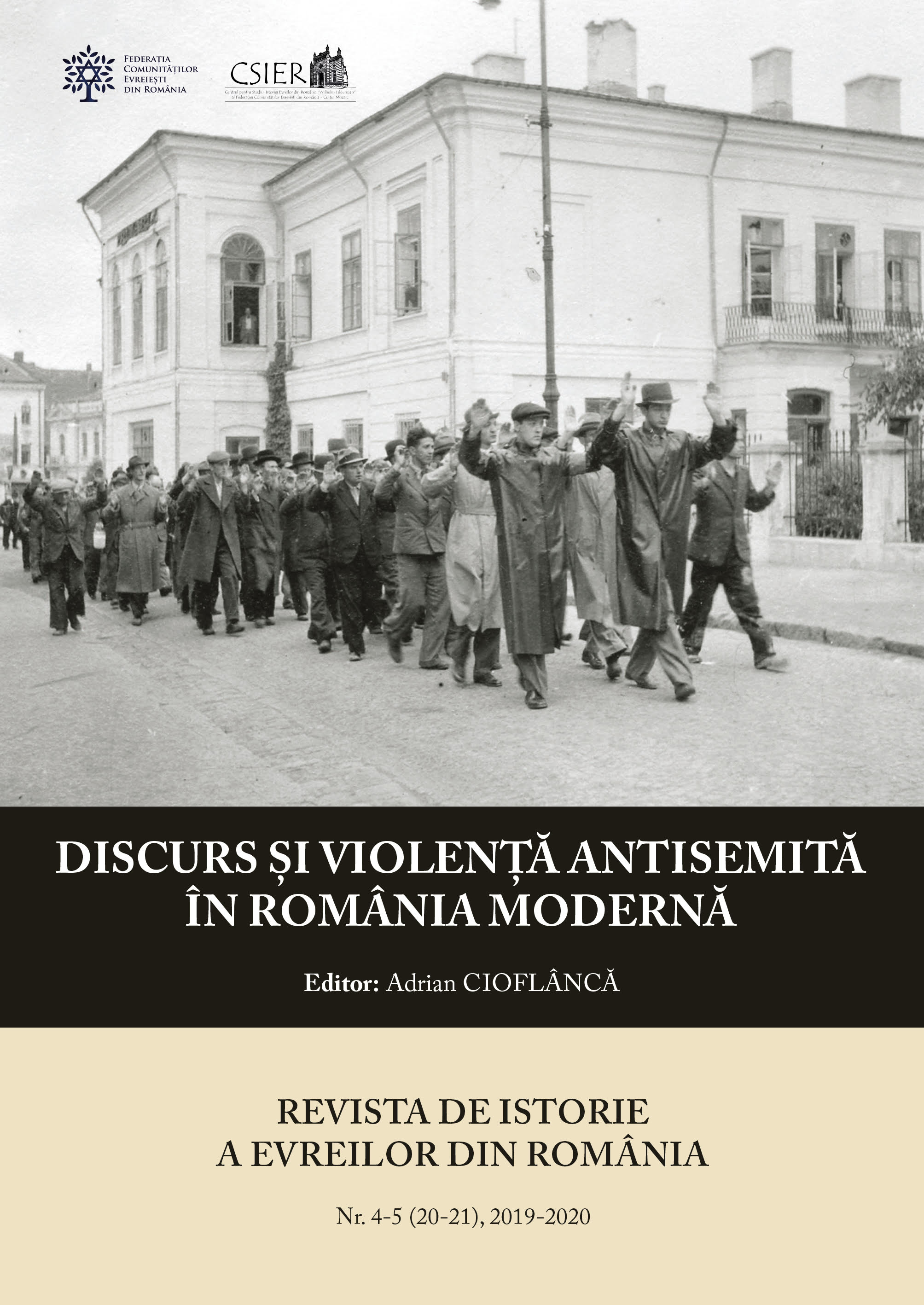
This paper discusses racism, eugenics and biopolitics in Romania during WWII. The anti-Semitic and anti-Roma attitudes of prominent Romanian eugenicists were not the exception, but the norm in a period during which the Romanian state pursued policies of ethnic purification, ultimately leading to the Holocaust.
More...
The article discusses the origin of the cliché according to which, during the evacuation of the Romanian troops from Bessarabia and Northern Bukovina, in June-July 1940, Jews had perpetrated violent acts against the Romanians, out of hatred. Firstly, the article examines which part of the local population was involved in actions for the benefit of the USSR, against Romania, and who was purely opportunistic. This analysis is based on testimonies which suggest that most ethnic groups, including Jews, Ukrainians, Russians, Bulgarians, Gagauzes, and Bessarabian Romanians, initiated or participated in such actions, although Jews did play a more important part. The testimonies also indicate that the Jews in question belonged in particular to the disadvantaged social classes and/or to the younger generation. Secondly, the article provides several possible explanations for these actions. It analyses, among others, the impact of an anti-Semitic regulation dated June 26, 1940. Thirdly, the article argues that the above-mentioned cliché stemmed from a racially-biased article published on June 29, 1940 in the Italian newspaper Il Messagero and later quoted by the official newspaper România.
More...
This article offers an overview of the advantages, uses, and abuses of oral history as a method of historical investigation, by focusing on major traumatic events, such as the Holocaust. It argues that, in spite of some of its shortcomings, oral history has become an important and widespread method of historical investigation that gathers valuable primary sources – useful for reconstructing historical events, but especially for the meanings revealed even in the case of erroneous recollections and what they tell about the interviewees and their interests. Oral history seems to be especially useful in cases of marginalized and under-represented groups and cases of mass violence that leave no, very few, or distorted documents.
More...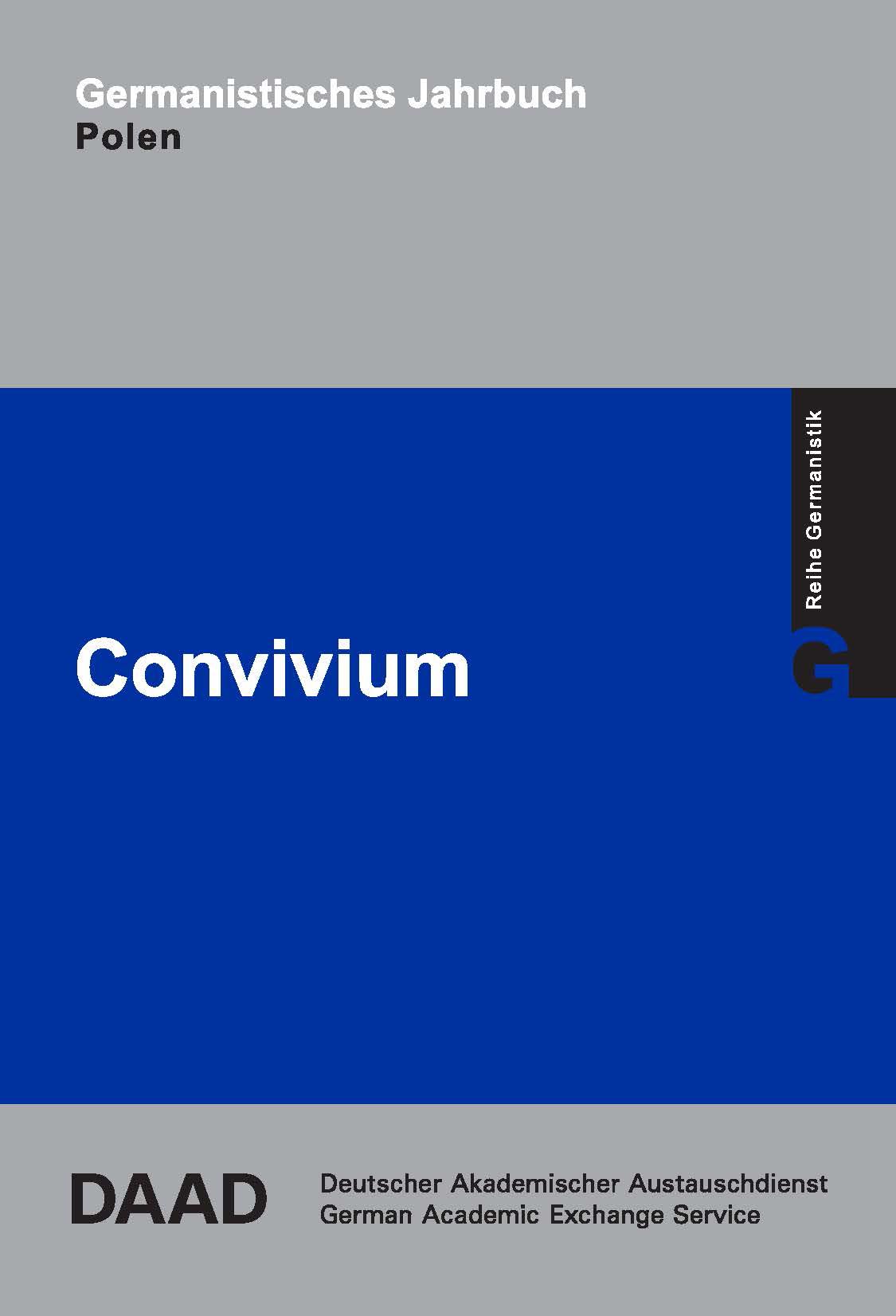
This article tries to compare books read at schools in Germany and in Poland concerning Second World War und Holocaust. As there isn’t a fixed canon of books for German schools, an inquiry became necessary to find out the ‚secret‘ canon. In Poland there are not only established compulsory books but also textbooks are used in preparation to matriculation. An investigation of three Polish textbooks and the canonical authors (Tadeusz Borowski, Czesław Miłosz, Hanna Krall) is in the centre of this article.
More...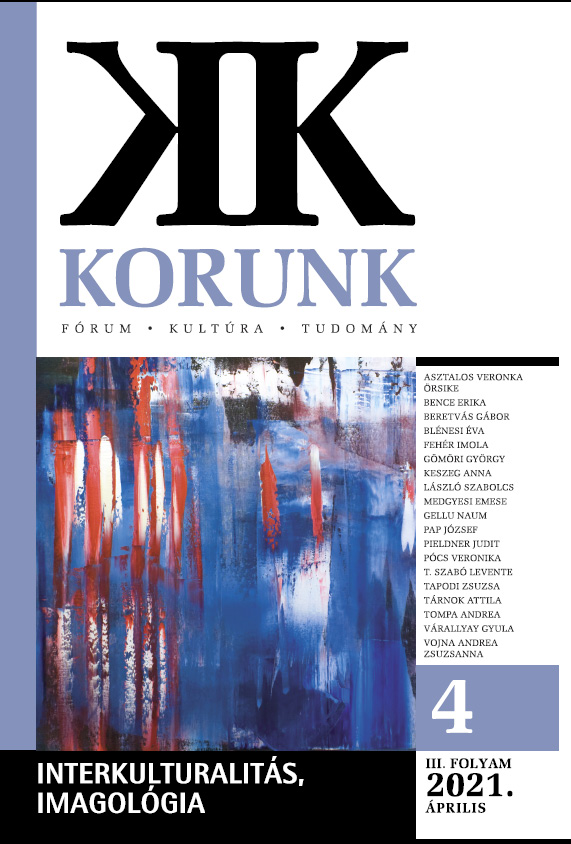
In my essay I investigated the case of some Hungarian Jewish women writers from Romania, whose work was forgotten, or never reached any wider audience. While belonging to a triple minority (Hungarian, Jewish, woman), one can hardly identify them as part of the (Hungarian) holocaust literature, or literature at all. The essay demonstrates a few cases and processes of how such works disappear from memory, parallel to the holocaust-memory. Due to the conflict of the authors with political regime and emigration, their work became completely invisible today.
More...
It was in 1975 that Tomas Venclova, writing in Soviet-occupied Lithuania, first trenchantly raised the hitherto largely avoided topic of relations between Lithuanians and Jews with special emphasis on issues of personal and national Lithuanian responsibility, guilt, and shame for Holocaust-related crimes. His essay evoked responses in both the Lithuanian underground and the Western diaspora press. A bit earlier similar questions of guilt and shame in various contexts were raised by the German-born U. S. philosopher Walter Kaufmann. This paper presents some of Kaufmann‘s views; juxtaposes them with some of Venclova‘s; and puts the issue of responsibility, guilt, shame, and punishment for major crimes in a theistic Christian framework which Kaufmann abjures, Venclova echoes, and this author largely accepts.
More...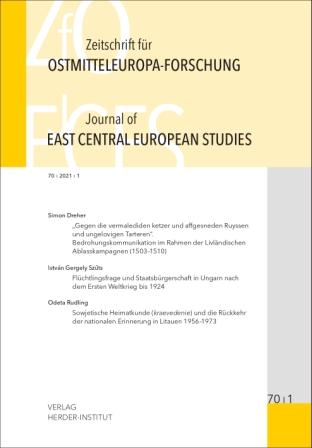
Book-Review: Salmen Gradowski, Die Zertrennung. Aufzeichnungen eines Mitglieds des Sonderkommandos. Hrsg. von Aurélia Kalisky unter Mitarbeit von Andreas Kilian. Aus dem Jiddischen von Almut Seiffert und Miriam Trinh. Jüdischer Verlag im Suhrkamp Verlag. 2. Aufl. Berlin 2020. 354 S., Ill. ISBN 978-3-633-54280-2. (€ 24,–.) ‒ . Stephan Lehnstaedt
More...
Book-Review: Marta Ansilewska-Lehnstaedt, Pole jüdischer Herkunft. Selbstdeutung polnischer Kinderüberlebender des Holocaust. (Studien zu Holocaust und Gewaltgeschichte, Bd. 2.) Metropol Verlag. Berlin 2019. 389 S. ISBN 978-3-86331-479-8. (€ 24,–.) ‒ Ursula Reuter
More...
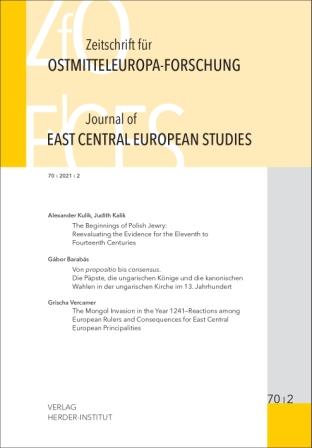
Review: Irene Hauser: Dziennik z Getta Łódzkiego / Das Tagebuch aus dem Lodzer Getto. Hrsg. von Ewa Wiatr und Krystyna Radziszewska. Wydawnictwo Uniwersytetu Łódzkiego. Łódź 2019. 142 S., Ill. ISBN 978-83-8142-453-0. (Nicole Silvia Widera)
More...